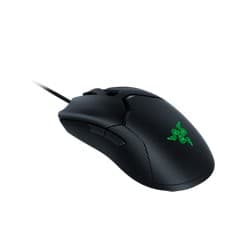 |
 |
|
| Diamondback | Viper 8KHz | |
| Specification: | ||
| No. of Buttons: | 7 | 7 + 1 |
| No. of Macro Keys: | ||
| No. of Game Profiles: | Via Software | 1 on-board |
| Connection: | USB | USB |
| Cable length: | 2.1 m, braided fiber | 1.8 m / 6 ft Speedflex |
| Wireless: | No | |
| Battery: | No | |
| Colour: | Black | Black |
| Ambidextrous: | Yes | Yes |
| Coating: | ||
| Software: | Synapse | Synapse 3 |
| Weights: | No | No |
| Switch: | Optical Switch | |
| Feet: | ||
| Sensor: | ||
| Type: | Laser | Optical |
| Brand: | ||
| Model: | ||
| Processor: | ||
| Lift off distance: | Adjustable | |
| DPI/CPI: | 16,000 dpi | upto 20,000 DPI (Default stages: 400/800/1600/2400/3200) |
| Memory Size: | ||
| Max tracking speed: | 210 ips | 650 ips |
| Max acceleration: | 50 g | 50 G |
| Response time: | 1,000 Hz | 8000Hz, 0.125ms |
| FPS: | ||
| NVIDIA Reflex: | ||
| Lighting: | ||
| Colour Options: | Chroma lighting | Chroma RGB |
| Lighting Effect: | Wave, Spectrum Cycling, Breathing, Static, Reactive | |
| Dimensions & Weight: | ||
| Dimension (LxWxH): | 125 x 60 x 30 mm | 126.73 x 57.6 x 37.81 mm |
| Weight (grams): | 89 g | |
| Weight w/o cable: | 71 g / 2.5 oz | |
| Also compared to: | Also compared to: |